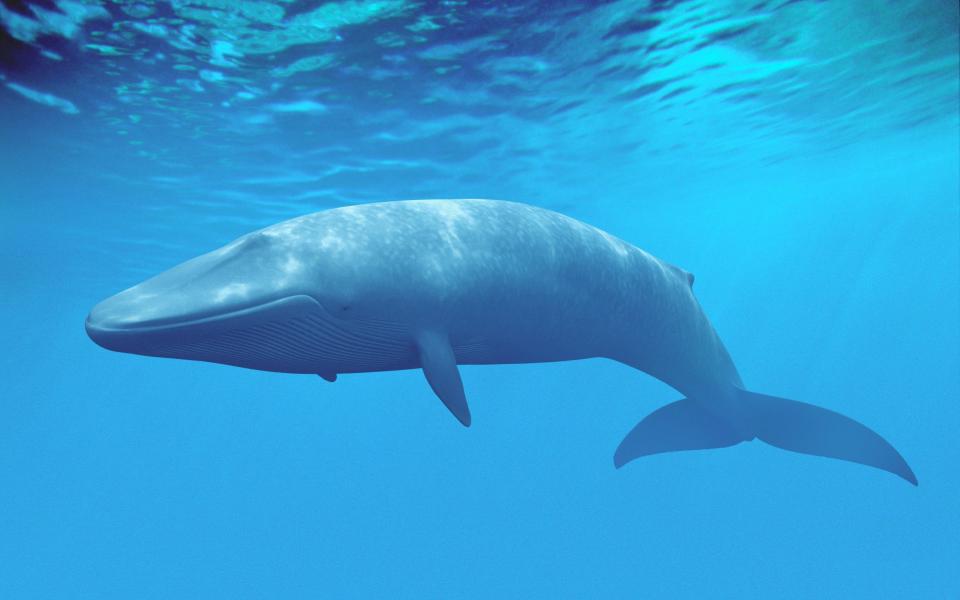A 40-million-year-old fossilized whale previously thought to be the heaviest animal on record is now thought to weigh less than a blue whale.
The 17 meter long whale, which was thought to have very dense bones, was originally thought to weigh 340 metric tonnes – the equivalent of 150 cars piled on top of each other.
But American scientists have now downgraded its weight – saying it wouldn’t have been able to survive or even swim if it weighed as much as previously predicted.
In a new study, published in the journal PeerJ, the ancient animal was put back on the scales and slimmed down to less than half the weight of the largest known blue whale.
The fossil skeleton of the whale, known as Perucetus colossus, was previously thought to be the heaviest animal to have ever walked the Earth.
The first vertebrae of the sea giant were discovered in Peru’s Ica River Valley more than ten years ago.
It is estimated to have lived around 39 million years ago and belonged to a group of early whales known as the Basilosaurids.
Scientists discovered that the bones of the Perucetus were unusually dense.
Mammalian bones usually have a solid exterior and a spongy or hollow center, but the center of some animals’ bones is more filled in with solid bone, making the bones very dense and heavy.
In aquatic animals, heavy bones can offset buoyancy from body fat and blubber, allowing the animal to maintain neutral buoyancy in water or – in the case of the hippopotamus – to walk on the river bed.
The bones of Perucetus were also found to have a large number of infills and extra bone growth on the outside; a condition called pachyostosis that is also seen in some modern aquatic mammals such as manatees.
Based on a series of assumptions, scientists initially estimated the whale’s body mass to have been weighed at around 180 metric tons, ranging up to 340 metric tons – more than 23 double-decker buses.
These estimates show that Perucetus was as heavy or heavier than the largest blue whales ever known – although it is much shorter at just 17 meters long, compared to blue whales that could measure up to an incredible 33 meters (110 feet).
However, a new study by paleontologists at the University of California (UC) Davis and the Smithsonian Institution, disputes these weights and argues that such estimates would make Perucetus too heavy.


Professor Ryosuke Motani, a paleobiologist at the UC Davis Department of Earth and Planetary Sciences, explained: “It would have been the whale’s job to stay at the surface, or even leave the bottom of the sea.
“To do anything in the water would require constant swimming against gravity.”
Dr. Motani, along with Dr. Nick Pyenson of the Smithsonian Institution’s National Museum of Natural History, re-examined the assumptions used to make those estimates to come up with their own revised weight for the giant beast.
The first problem they identified with previous inch scales was that they used fossil bones to estimate the weight of the skeleton and extrapolated this to the weight of the whole animal, assuming a mass scale skeletons and non-skeletals at the same rate. with an increase in body size.
But Dr Motani and Dr Pyenson argue that measurements of other animals show that this is not the case.
They therefore believe that the original estimates of the extent to which body mass increases as a result of pachyostosis – a condition of thickening of the bones – were overestimated.
Evidence from manatees, for example, shows that their bodies are relatively light relative to their skeletal mass.


The researchers now estimate that the 17 meter long Perucetus weighed between 60 and 70 tonnes.
According to the new estimates, Perucetus that grew to 20 meters could weigh more than 110 tons, still much less than the largest blue whales at 270 tons.
“The new weight allows the whale to come to the surface and stay there while breathing and recovering from a dive like most whales do,” Dr Motani said.
Palaeontologists have not yet found a Perucas skull or teeth, so it is difficult to understand what they ate.
Maintaining a large body requires a lot of food, and researchers from Italy have previously suggested that the Perucetus may have feasted on coastal fish and shellfish, or scavenged carcasses as some sharks do.
The newly reduced size estimate puts the Perucetus in a weight range similar to sperm whales – at 80 tonnes and 20 meters long – which hunted large prey such as giant squid.